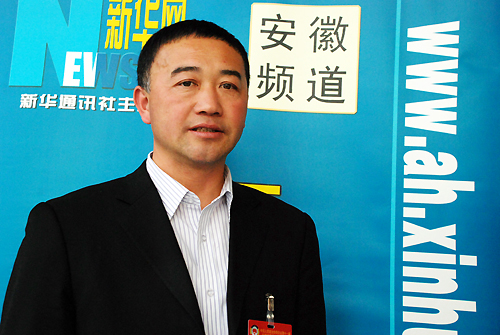Enterprise News
Councilor Gao Guangyin: To Accelerate development of Public Transportation in rural areas in Anhui Province
During the recent provincial two sessions, Gao Guangyin, member of the CPPCC Anhui Provincial Committee and president of Anhui GYT Chinese Medicine Company Ltd, proposed to accelerate the development of public transportation in rural areas in Anhui Province.
Gao says, rural public transportation concerns the fundamental issue of public livelihoods and production. With the fast economic growth, the mass demand for trips grows fast too, resulting in an increasing public attention placed upon the development of public transportation in both urban and rural areas.
 Gao Guangyin, member of the CPPCC Anhui Provincial Committee and president of Anhui GYT Chinese Medicine Company Ltd. (Photography: Ma Xiangping)
Gao Guangyin, member of the CPPCC Anhui Provincial Committee and president of Anhui GYT Chinese Medicine Company Ltd. (Photography: Ma Xiangping)
The rapid urbanization and promotion of new countryside has shaped a number of Village Centers with concentrated population. The infrastructure in rural areas has gradually improved, which can be seen from the progress of ¡®Village-To-Village¡¯ project. In the context of urbanization and new countryside construction, there is a good market opportunity for public transportation in rural areas to develop. Such development has built a firm foundation for ¡®Village-To-Village¡¯ Project to expand on a greater scale. According to the report of China¡¯s 12th Five-year Plan for Transportation by Department of Transportation, a 92% delivery rate of shuttle bus service in rural areas should be achieved to support ¡®Village-To-Village¡¯ Project by 2015.
In recent years, the rapid urbanization and improvement in standard living in rural areas in Anhui Province has varied the way people travel. The recent economic boost has facilitated the road conditions in the countryside, resulting in enhanced connection between urban and rural, shown by the extension of bus lines to rural places in richer regions. Despite the basic implementation of ¡®Village-To-Village¡¯ Project, such transportation service still accepts the challenges from urbanization as well as the rising demand for higher level of comfort and security from rural consumers. The challenges are as follows:
1.Limited Coverage of Bus lines
With limited shifts and coverage, most bus lines are designed and located on main lines such as state roads and provincial highways. Rural residents who live far from such main lines therefore have to travel using other means of vehicles such as motorcycles or electric bicycles; regardless of the risk of overload, some may even choose to travel by farming tricycles. For years, the high frequency of traffic accidents and great number of causalities has been observed.
2. Students in rural areas face difficulties in their journeys to school. The reconstruction and recombination of rural schools has caused longer distance of travel, whereas schools are unlikely to afford all costs of purchase, maintenance and operation of school buses. Similarly, students are usually picked up by motorcycles, which pose great threats to personal security.
Regarding the above concerns, Gao proposed solutions as follows:
1.Active promotion of ¡®Village-To-Village¡¯ Project as part of Anhui Livelihoods Projects; Set up a special fund for further implementation.
2.Multiple provision of finance to increase investment; facilitation of the rural public transportation industry via government expenditure, tax cut and market policies according to the preferential policies (E.g. Reduction of highway maintenance fees and sales tax to further reduce operation costs; Reduction of transportation fees to aid the public). All rural transportation lines are guaranteed by government budget through tax reduction, provision of subsidized loans and privileged vehicle insurance. Furthermore, to ensure the affordability, quality and safety, all rural transportation lines should be able to enjoy the subsidies of infrastructural renewal, IT construction and new energy technologies.
3.Accelerate the infrastructural development of public transportation through the following means: Rural public transportation renewal and bus stop construction if allowed; Adjustment and optimization of transportation lines by increasing route alternatives; Relocation of departure point near central village through ¡®school-centered¡¯ allocation of transportation lines to reduce high operation costs. Therefore, the objectives of ¡®fast departure, short duration and safe arrival¡¯ can be achieved.
